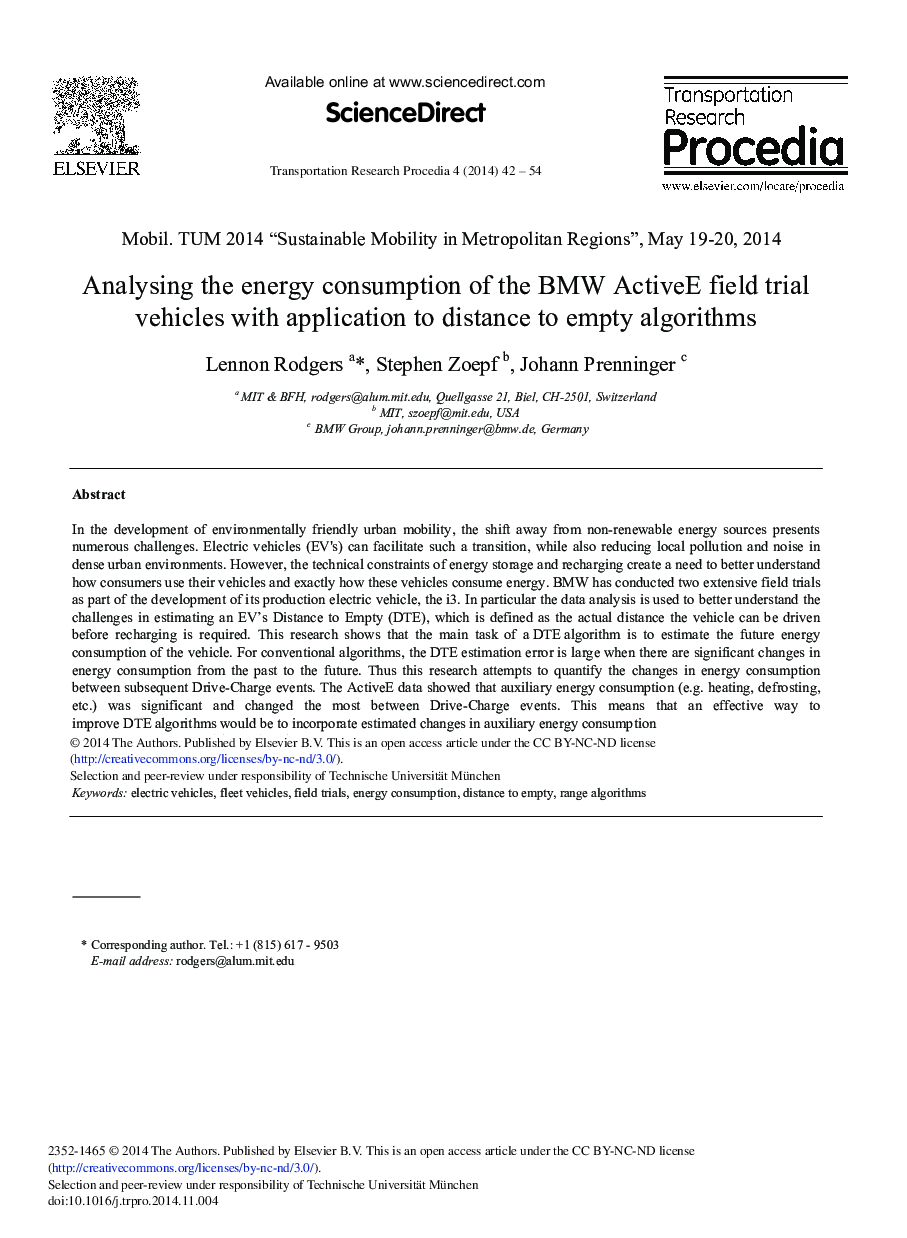| Article ID | Journal | Published Year | Pages | File Type |
|---|---|---|---|---|
| 1106313 | Transportation Research Procedia | 2014 | 13 Pages |
In the development of environmentally friendly urban mobility, the shift away from non-renewable energy sources presents numerous challenges. Electric vehicles (EV's) can facilitate such a transition, while also reducing local pollution and noise in dense urban environments. However, the technical constraints of energy storage and recharging create a need to better understand how consumers use their vehicles and exactly how these vehicles consume energy. BMW has conducted two extensive field trials as part of the development of its production electric vehicle, the i3. In particular the data analysis is used to better understand the challenges in estimating an EV's Distance to Empty (DTE), which is defined as the actual distance the vehicle can be driven before recharging is required. This research shows that the main task of a DTE algorithm is to estimate the future energy consumption of the vehicle. For conventional algorithms, the DTE estimation error is large when there are significant changes in energy consumption from the past to the future. Thus this research attempts to quantify the changes in energy consumption between subsequent Drive-Charge events. The ActiveE data showed that auxiliary energy consumption (e.g. heating, defrosting, etc.) was significant and changed the most between Drive-Charge events. This means that an effective way to improve DTE algorithms would be to incorporate estimated changes in auxiliary energy consumption
